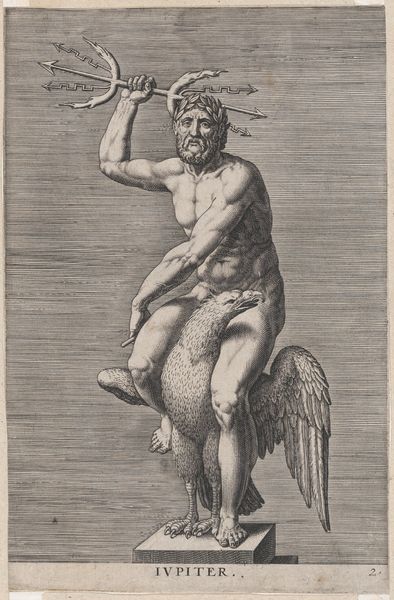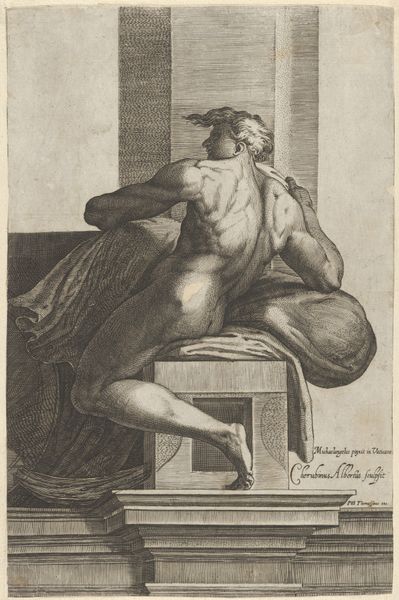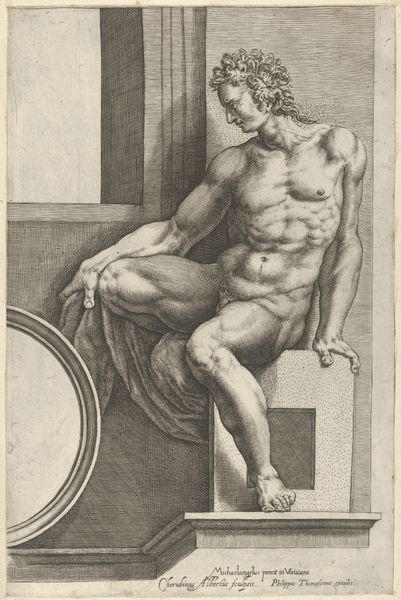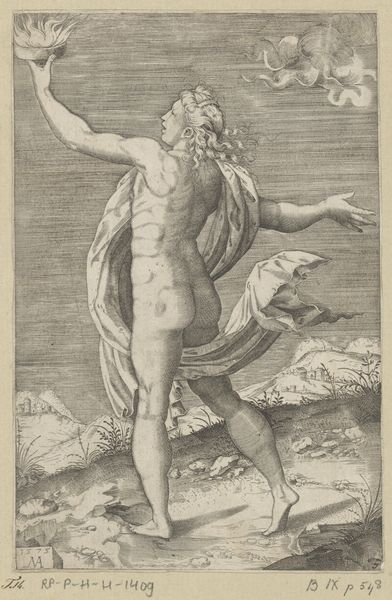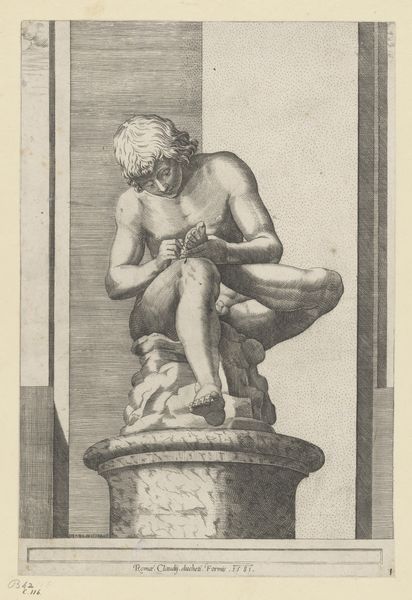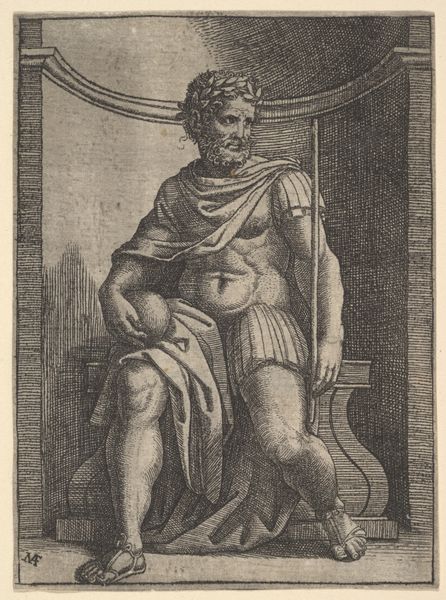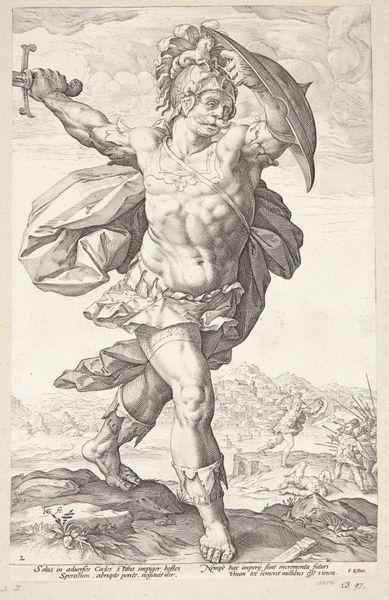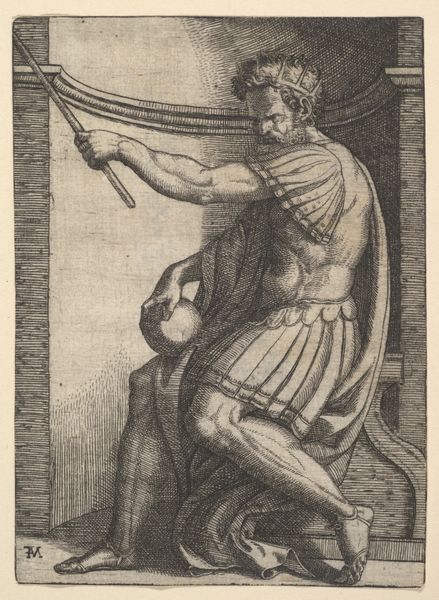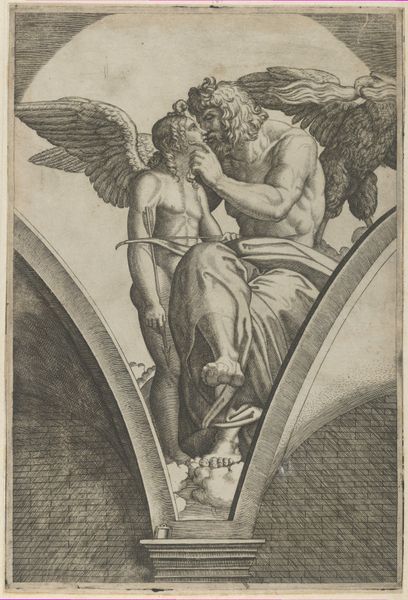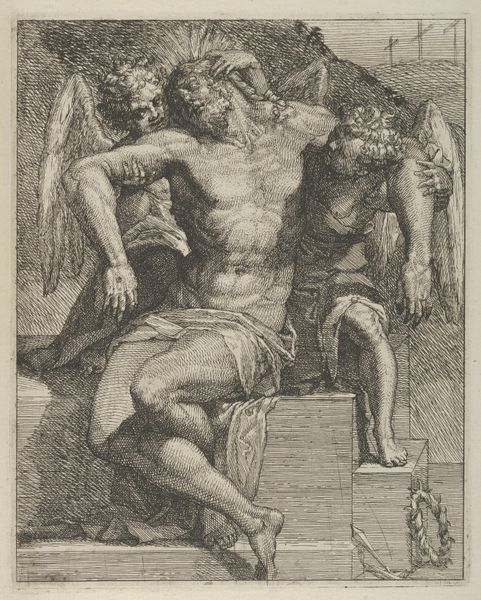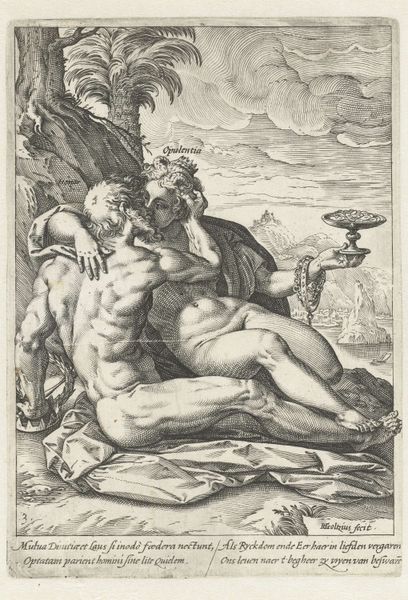
A naked man (Ignudo) with a garland with acorns over his shoulders, after Michelangelo's 'The Last Judgment' fresco in the Sistine Chapel 1580 - 1590
0:00
0:00
drawing, print, engraving
#
drawing
# print
#
figuration
#
11_renaissance
#
history-painting
#
italian-renaissance
#
engraving
#
male-nude
Dimensions: Sheet: 11 5/16 × 7 11/16 in. (28.7 × 19.5 cm)
Copyright: Public Domain
Editor: We're looking at Cherubino Alberti's "A naked man (Ignudo) with a garland with acorns over his shoulders, after Michelangelo's 'The Last Judgment' fresco in the Sistine Chapel," an engraving from the late 16th century. The figure seems incredibly muscular, but also rather weary. What stands out to you? Curator: What fascinates me is not just the representation of the body itself, but the material process behind its reproduction. Think about the labor involved in creating an engraving like this. The engraver is essentially translating Michelangelo's fresco through a completely different medium, a process that inherently involves a series of choices, each determined by the qualities of metal, acid, and printing press. Editor: So, you're more interested in the ‘how’ than the ‘what’ of the artwork? Curator: Precisely! Consider how the print medium democratizes Michelangelo's vision. It's no longer confined to the Sistine Chapel; it's made accessible for broader consumption, potentially influencing decorative arts, smaller prints, and so on. This alters the cultural value. Editor: It’s interesting how a print, normally seen as just a reproduction, has its own production history. Do you see this print elevating or cheapening Michelangelo's original work? Curator: That’s the central question, isn’t it? Does the mechanical reproduction diminish the aura of the original, or does it expand its cultural reach? Both, perhaps. The value of the print isn't just in its resemblance to the fresco, but in its function within the material culture of the late Renaissance, affecting tastes, patterns of consumption, and ideas about art itself. What are your thoughts? Editor: I see your point. Focusing on the material and the production does give me a whole new appreciation for prints of this era. Thanks for the insight! Curator: It’s crucial to see art objects not in isolation but within the dynamic interplay of materials, labour, and social exchange that constitutes their history.
Comments
No comments
Be the first to comment and join the conversation on the ultimate creative platform.

